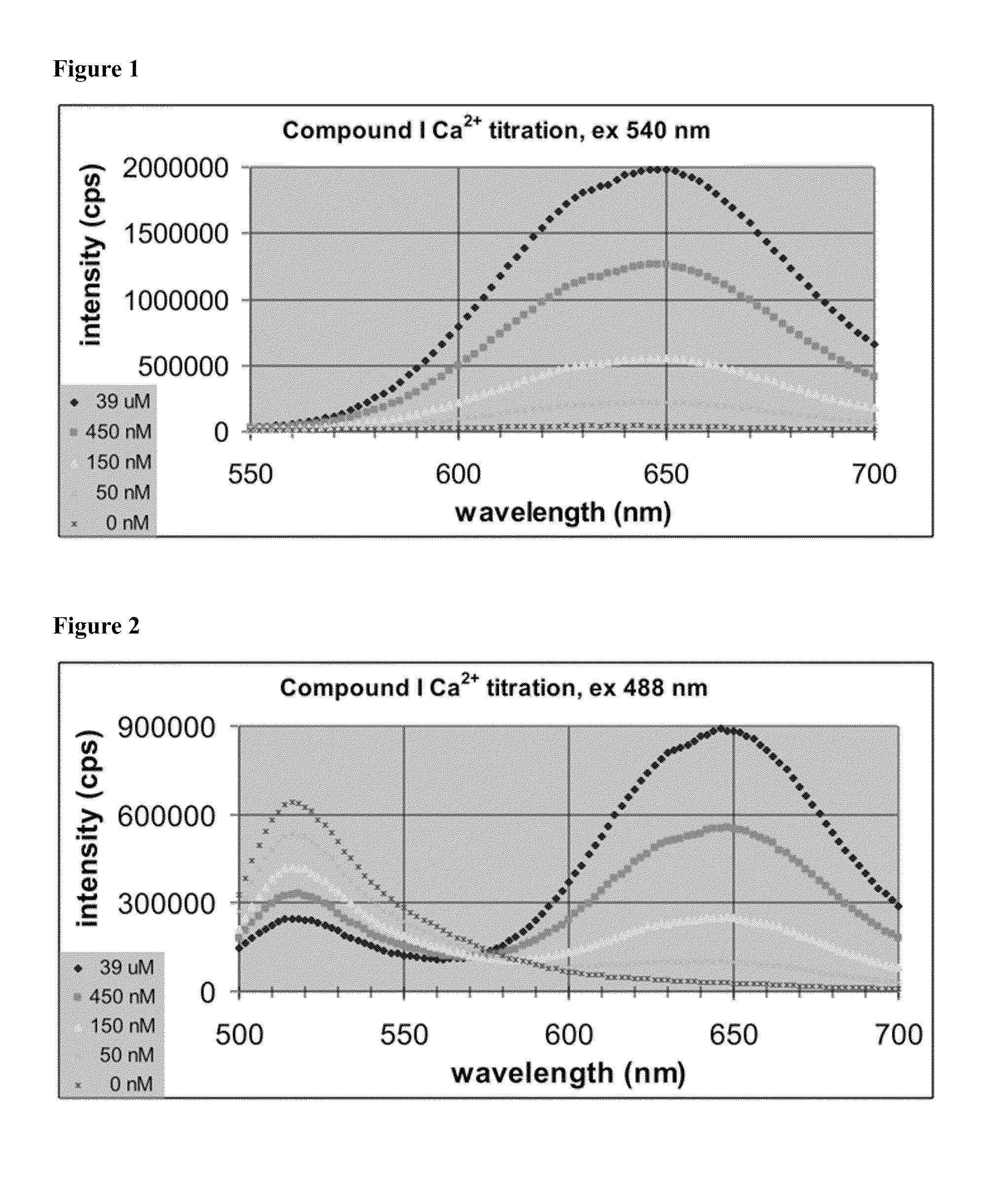Fluorescent calcium indicators that are ratiometric and emit in the red spectrum
a technology of ratiometric and fluorescent indicators, applied in the field of long wavelength fluorescent ion indicators, can solve the problems of limited general use of ultraviolet light, high energy ultraviolet light can also be harmful to the cell, and high cost of ultraviolet ligh
- Summary
- Abstract
- Description
- Claims
- Application Information
AI Technical Summary
Benefits of technology
Problems solved by technology
Method used
Image
Examples
Embodiment Construction
[0053]FIG. 1 shows a non-ratiometric calcium titration of Compound I. Appropriate volumes of 10 mM potassium-EGTA, 100 mM KCl, 10 mM MOPS buffer at pH 7.20 and 10 mM calcium-EGTA, 100 mM KCl, 10 mM MOPS buffer at pH 7.20, each containing 5 μM Compound I were mixed to give the desired free calcium concentrations of 0 nM, 50 nM, 150 nM, 450 nM, and 39 μM. Emission spectra were recorded of each solution with excitation at 540 nm, resulting in a strong increase in emission intensity at 650 nm with increasing calcium concentration. Calculation of dissociation constant gave approximately 400 nM. Spectra were recorded on SPEX Fluoromax-3.
[0054]FIG. 2 shows a ratiometric calcium titration of Compound I. Appropriate volumes of 10 mM potassium-EGTA, 100 mM KCl, 10 mM MOPS buffer at pH 7.20 and 10 mM calcium-EGTA, 100 mM KCl, 10 mM MOPS buffer at pH 7.20, each containing 5 μM Compound I were mixed to give the desired free calcium concentrations of 0 nM, 50 nM, 150 nM, 450 nM, and 39 μM. Emissi...
PUM
| Property | Measurement | Unit |
|---|---|---|
| pKa | aaaaa | aaaaa |
| pKa | aaaaa | aaaaa |
| dissociation constants | aaaaa | aaaaa |
Abstract
Description
Claims
Application Information
 Login to View More
Login to View More - R&D
- Intellectual Property
- Life Sciences
- Materials
- Tech Scout
- Unparalleled Data Quality
- Higher Quality Content
- 60% Fewer Hallucinations
Browse by: Latest US Patents, China's latest patents, Technical Efficacy Thesaurus, Application Domain, Technology Topic, Popular Technical Reports.
© 2025 PatSnap. All rights reserved.Legal|Privacy policy|Modern Slavery Act Transparency Statement|Sitemap|About US| Contact US: help@patsnap.com



